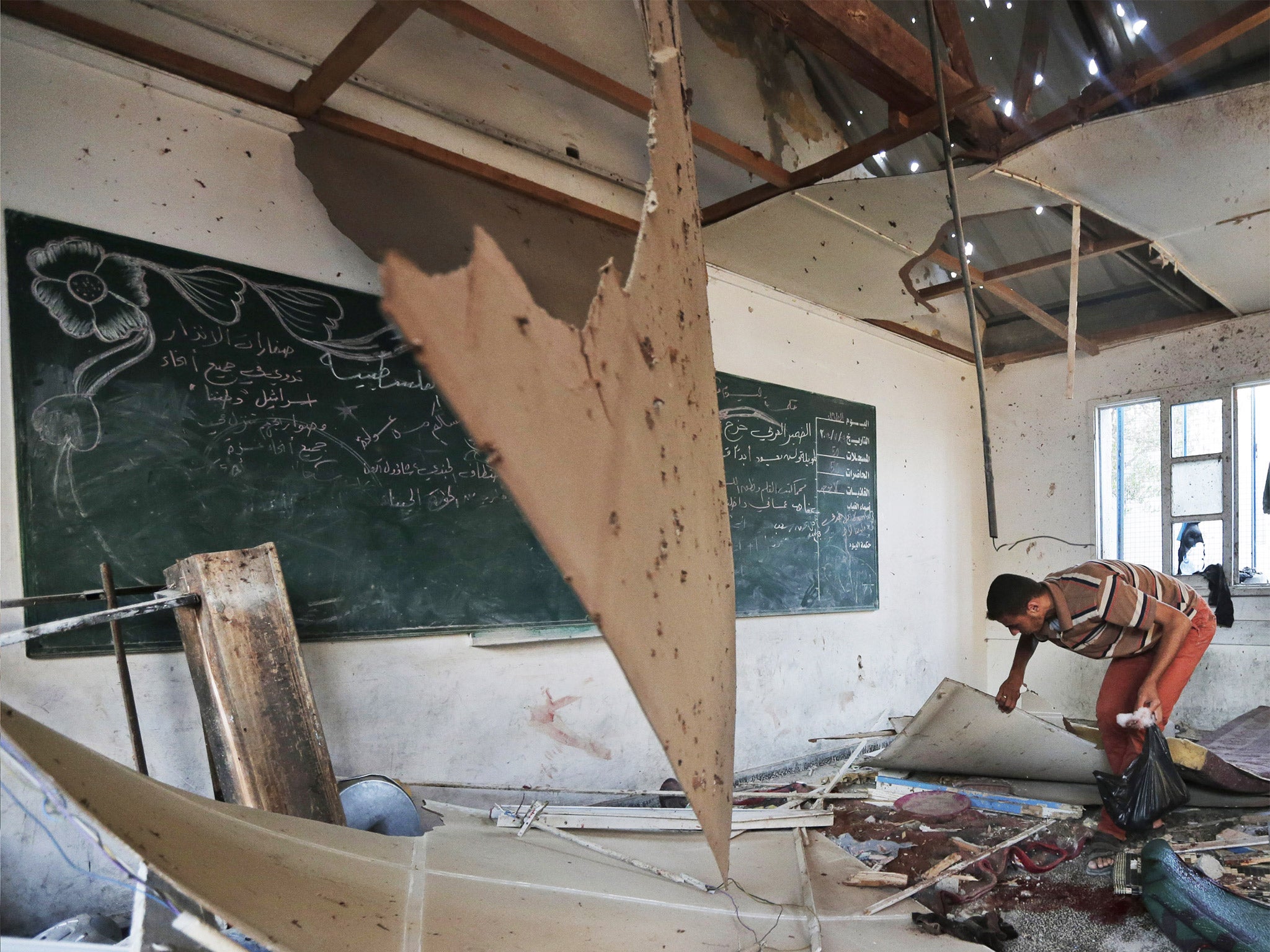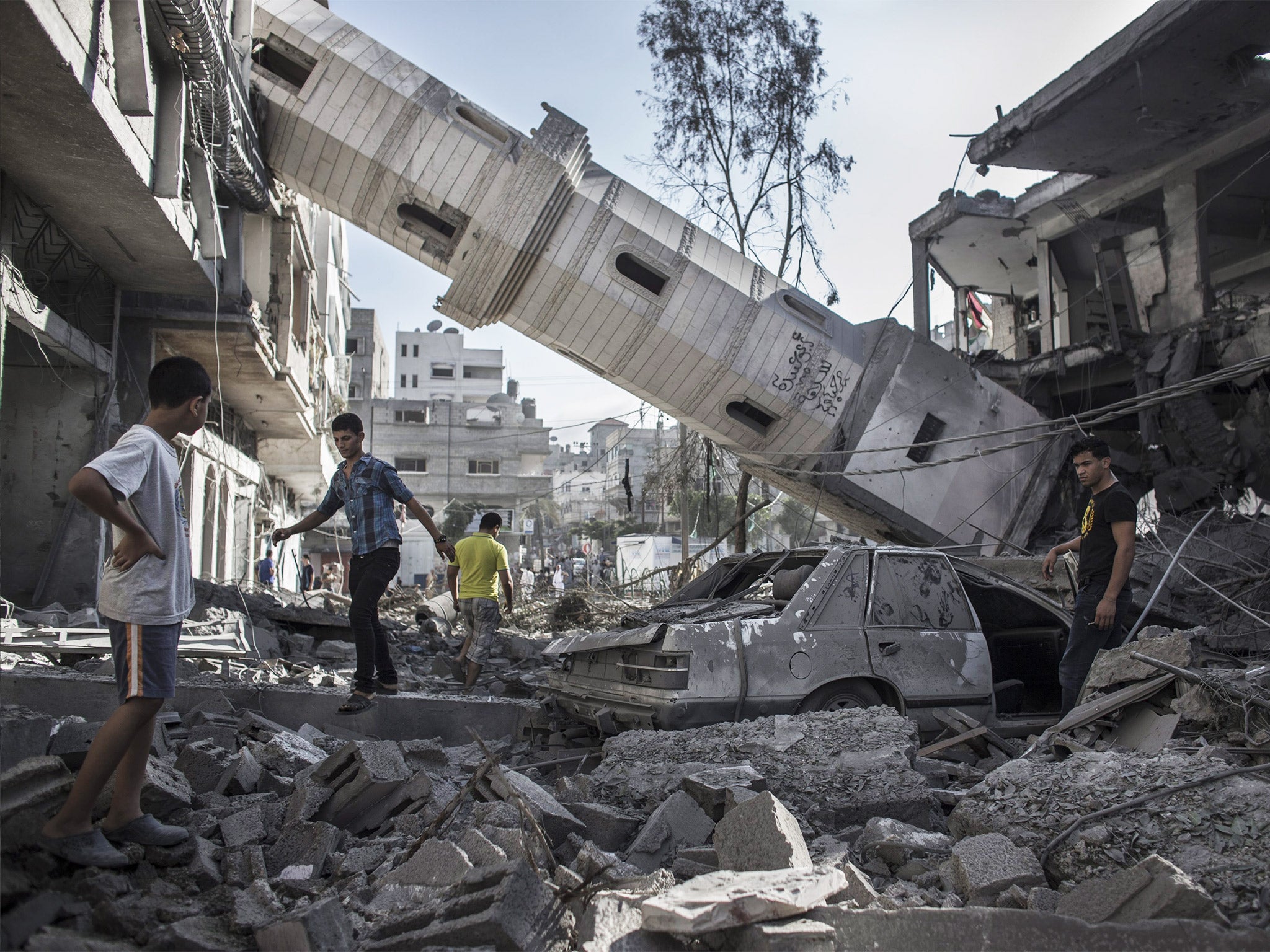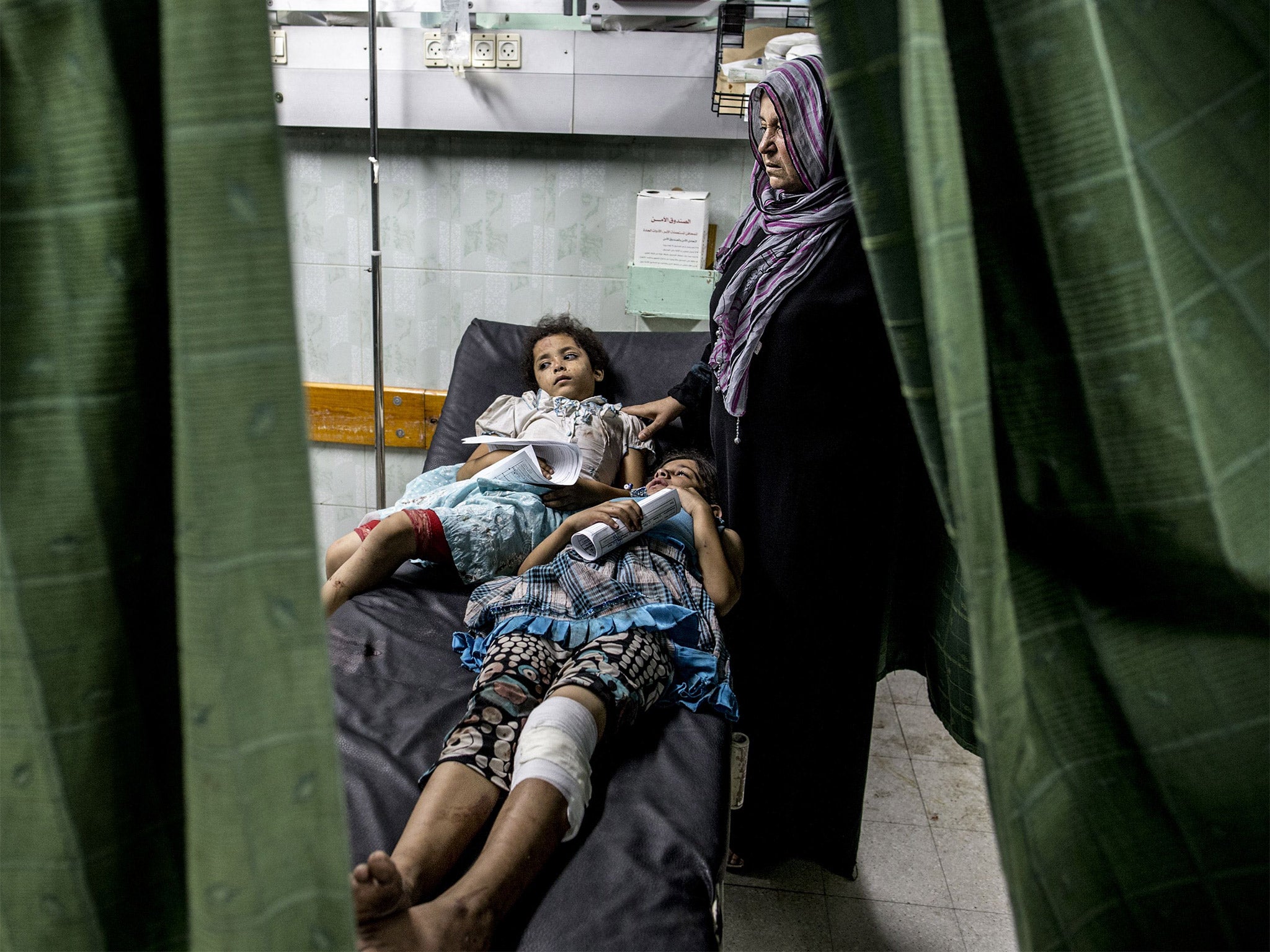Israel-Gaza conflict: UN accuses Israel of possible war crime after shelling of Gaza schools kills 19
But Israelis insist they have photographic proof that Hamas is storing weapons in civilian areas

Your support helps us to tell the story
From reproductive rights to climate change to Big Tech, The Independent is on the ground when the story is developing. Whether it's investigating the financials of Elon Musk's pro-Trump PAC or producing our latest documentary, 'The A Word', which shines a light on the American women fighting for reproductive rights, we know how important it is to parse out the facts from the messaging.
At such a critical moment in US history, we need reporters on the ground. Your donation allows us to keep sending journalists to speak to both sides of the story.
The Independent is trusted by Americans across the entire political spectrum. And unlike many other quality news outlets, we choose not to lock Americans out of our reporting and analysis with paywalls. We believe quality journalism should be available to everyone, paid for by those who can afford it.
Your support makes all the difference.Faiza Al-Tanboura had not spoken for 21 days since a missile strike destroyed her home. In the early hours of this morning she found her voice: “The children. Don't let them kill the children,” she shouted as she ran out into the playground of a UN school under Israeli tank fire.
Today's attack on the Jabaliya Elementary Girls School has been described as a possible war crime by the UN. The Israeli authorities, it said, had been told no less than 17 times that it was full of refugees, the last warning message delivered on 8.50 on Tuesday evening.
But, seven and half hours later, a series of shells smashed into the building, destroying two of the classrooms, killing 19 and injuring more than a hundred others. Pierre Krahenbuhl, the commissioner for UN agency for Palestinian refugees, described the killings as “a source of universal shame”. Investigations clearly showed, he maintained, that Israeli fire was to blame, condemning “in the strongest possible terms this serious violation of international law by Israeli forces.”
The Israeli military stated that militants had been firing mortar rounds from the vicinity of the school and troops had returned fire; a spokeswoman added that an investigation was under way to ascertain what had happened. Hamas and Islamic Jihad had been accused repeatedly of storing and using weapons in civilian areas; and the Israelis have produced photographs showing, they said, rockets being stored in mosques.
The White House condemned the shelling of the school, saying it was “extremely concerned that thousands of internally displaced Palestinians who have been called on by the Israeli military to evacuate their homes are not safe in UN designated shelters in Gaza”.
This evening, after Israel had declared a four hour humanitarian ceasefire, came another attack, on a busy market in Shijaiyah, between Gaza City and the Israeli border, leaving 15 dead and 150 injured.
Earlier, Mr Krahenbuhl wanted to stress that those at the school had been placed in the line of fire after they “were instructed to leave their homes by the Israeli military. The precise location of the school and that it was housing thousands of people was communicated to the Israeli army 17 times to ensure its protection.”
The Independent met some of the families at the shelter 10 days ago. “I told you that you would come back here,” said Mohammed Abu Jarad this morning amid the destruction. “You remember me saying something like this would happen? Many of us felt this way, but we stayed on, where else could we go? There's nowhere safe”, he added as we watched UN workers gather body parts and remove fragments of ordnance.
Eight members of the Abu Jarad family had been killed in a missile strike at their home in the town of Beit Hanoun 10 days ago. Four of them were children, the youngest Moussa, a baby of seven months. At the funeral his body, and that of two and half year old Hania, with blood on their shrouds and faces, were carried by relays of men. Mahmoud Abu Jarad, an uncle had said: “We want the Israelis to see what they have done. Perhaps they will feel some pity and stop this slaughter.”
The Jabaliya shelter was already full and overflowing when 10 members of the Abu Jarad family arrived there on 19 July, to move into a classroom already hosting 30 people. One of the other families there were the Al-Tanboura, they were deeply worried about Faiza, a woman in her mid-30s, who had barely uttered a word since fleeing her burning house in the town of Al-Atrat. “We will have to take her to a doctor when all this is over, they are busy treating the wounded now”, Somaya, a cousin, had observed.

“Our capacity is around 700, now we are having to cope with more than 1,600,” the UNRWA director of the school, Nassar Al-Jadiyan had said at the time; now it stands at 3,300. The total death toll for Palestinians on the day was 340, it stands today at around 1,210.
There had been an attack on a UN school in Beit Hanoun last week in which 15 were killed with recriminations afterwards between the UN and Israel over the failure to carry out an evacuation. “Here there was no warning from the Israelis and I am very surprised this has happened” said Mr Jadiyan. “I thought Beit Hanoun, well it was closer to the border, but I don't understand why this should happen here.
“Having an attack was always going to lead to a lot of casualties. We have had the numbers build up here, people were very frightened so they kept coming in, we couldn't turn them away.”
The pressure of numbers meant that many, all of them men, were sleeping outside in a courtyard which was used as the playground when the school was open. Among them were Talal al-Ghamayem and his three sons, five-year-old Ahmed, Younis, 15, and Mohammad, 11, a family from Beit Hanoun who had spoken in previous meetings about how eager they were to get back home and then discovered, on returning during a temporary ceasefire, that there was no home left to go back to.
When the first explosion came, demolishing a classroom at the front of the building where the majority of the deaths had taken place, Halima al-Ghamayem had run out to look for her husband and sons. The next shell landed in the courtyard, hitting her with flying shrapnel and also injuring five-year-old Ahmed.
Ghader, 17, had tried to stop her mother running out. “But I couldn't, she was so desperate. We managed to pick her up after she was injured and drag her inside. She just wanted to know about Ahmed. But, very luckily, he wasn't too badly hurt. But what will happen next time?”

Ola Abu Jarad lay on her mattress on the floor listening to the approaching sound of shells landing thinking, she said, of members of her family who had already died. At one point she heard what she thought were cries of pains and feared that an attack had already taken place on the school.
What had happened, in fact, was that paddock nearby had been hit and the screams were from injured donkeys and horses. They had been used by refugees to bring them to the shelter, fuel for cars having long run out in some of the border areas.
The school was hit minutes later; the Abu Jarads spent the next hour trying to find each other in the smoke and confusion. This afternoon Mohammed Abu Jarad was desperately trying to find somewhere else to stay. “We need to get out of here, everyone needs to get out of here. Otherwise you and the other journalists will have to come back here, they will hit this place again. But we can't find anywhere, it's impossible.”
People were rushing in and out of the classrooms, asking about the injured, anxiously wondering whether there was any place at all in Gaza which was safe. Faiza al-Tanboura was oblivious to it all, sitting in a corner, hands clasped around her knees, gently rocking to and fro. “She has stopped talking again,” said a cousin.
Join our commenting forum
Join thought-provoking conversations, follow other Independent readers and see their replies
Comments